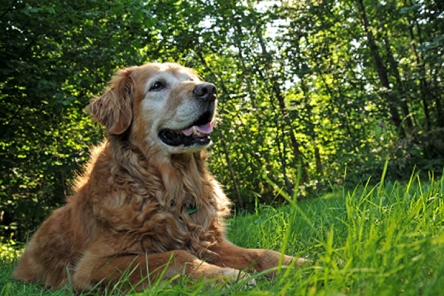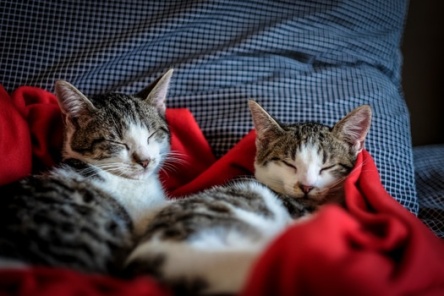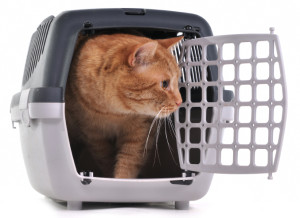When you’re feeling under the weather, you might find that the perfect thing for treating what ails you is something you already have in the kitchen. Did you know that you can use similar, simple home remedies to treat allergies in dogs, ailments in dogs, and other canine annoyances, too? with some simple home remedies too? Below you will find seven great natural remedies for making your dog happy and healthy again, whether they are suffering from allergies, dehyrdation, fleas, and more.
1. Vitamin E for Dogs with Dry Skin
Have you ever wondered how to treat dry skin on dogs? Vitamin E is good for preventing those pesky age lines on your face, and it’s also great for your dog’s dry skin. You can give your pup a doggy massage by applying vitamin E oil directly to the skin, a soaking bath with vitamin E added to the water, or you can go all “Hollywood” and pop your dog a pill (of vitamin E, that is).
If you give the vitamin orally, check with your vet on the recommended dosage for your specific dog breed.
2. Electrolyte-Replacing Liquids for Diarrhea and Vomiting
Flavorless electrolyte-replacing liquids, such as sports waters or pediatric drinks, not only help athletes to replenish fluids, and babies to rehydrate after an illness, they can also supply your sick pooch’s body with much needed fluids after a bout of diarrhea or vomiting.
Consult your veterinarian as to the appropriate dosage amounts when giving these types of liquids to your dog.
3. Yogurt and Acidophilus for Dogs
Deliciously plain yogurt is a healthy treat for your dog. Just as with humans, the live acidophilus in the yogurt keeps the good bacteria in your dog’s intestines in balance, so that bad bacteria is swiftly knocked out. If your dog is on antibiotics, a little yogurt will also help keep yeast infections at bay (a common side-effect of antibiotic treatment). You can also give your dog acidophilus pills — wrapping the pills in bacon is strictly optional.
Puppies are especially prone to yeast infections, so a little plain yogurt as a snack (or even dessert) can help keep things in balance; especially useful while the intestinal system is building immunities.
4. Chamomile Tea for Dogs
Chamomile tea uses the natural disinfecting effects of the chamomile plant to settle upset doggy tummies. It is recommended for colic, gas, and anxiety. It can also alleviate minor skin irritations. Just chill in the fridge and spray onto the affected area on the dog’s raw skin. Your dog should feel an immediate soothing effect as the chilled tea kills the yeast and/or bacteria on the skin. A warm (not hot) tea bag can also be used for soothing infected or irritated eyes.
5. Oatmeal to Stop Your Dog from Itching
An itchy dog can be quite an annoyance, especially as it goes around scratching itself on any piece of furniture it can reach. But don’t blame your dog, sometimes they’re ircy because of allergies and can’t help but to scratch. If your pup is itchy, forget the backscratcher! Finely ground oatmeal is a time-honored remedy for irritated skin. You can use baby oatmeal cereal or grind it yourself in a food processor. Stir the oatmeal into a bath of warm water and let your dog soak in the healing goodness. Your dog will thank you, trust us. Dogs with skin allergies, infections, and other diseases which cause itchiness have been shown to gain immediate relief with this approach, too.
6. Epsom Salt Bath for Dogs’ Wounds
Dogs can be like kids at times, and as such they are bound to suffer from wounds and the occasional unexplained swelling. Try treating these ailments with Epsom salt soaks and heat packs next time. A bath consisting of Epsom salt and warm water can help reduce the swelling and the healing time, especially when combined with prescribed antibiotics and veterinary supervision. Be sure that your pet does not ingest Epsom salt, however, as it can be very harmful. Also, do not bathe your pet in Epsom salt if there are open wounds.
If soaking your dog in an Epsom salt bath twice a day for five minutes isn’t convenient or practical, a homemade heat pack using a clean towel drenched in the same warm-water solution can be applied to wounds for the same effect.
7. Flea Home Remedies
Does your dog have fleas? Some dogs are allergic to flea bites and just one can cause them to itch for days. Never fear. Before turning to the big guns, try some borax powder. The standard stuff at the store will work wonders on fleas by poking holes in their crunchy insect exoskeletons. A good way to make sure those parasitic suckers get annihilated is to sprinkle the borax on your floor, and then sweep or vacuum up the excess. The invisible borax crystals left behind will kill the fleas and you won’t even have to lift a finger. It’s inexpensive and practically non-toxic compared to an appointment with the exterminator, just make sure that your dog does not ingest any borax.
To relieve the dog’s allergies and repel fleas in its fur, try a simple solution of lemon water. Fleas are repelled by citrus, so this can work both as a flea preventive, and for making your dog smell clean and refreshing. A useful solution can be made by pouring boiled water over lemons and allowing them to steep over night. This solution can then be applied all over your dog’s skin using a fresh spray bottle. And, the tried and true Brewer’s yeast method cannot be left out. Brewer’s yeast can be given as part of a regular diet in powdered form, sprinkled over the dog food, or in tablet form, perhaps wrapped in a small slice of bacon or cheese.
Home (or holistic) remedies aren’t just for tree huggers anymore. It’s important to take care of your dog from day to day, not just when it’s feeling a little under the weather, and the best way to maintain the best health is often the most natural way. But most of all, it’ll help keeping your “baby” from crying like a hound dog.










 This is critical should the need for disaster evacuation, temporary housing during travel, and restraint be necessary. Many people have lost their cats because they were moving and did not think about securely putting their cat into a carrier or separate room for their safety.
This is critical should the need for disaster evacuation, temporary housing during travel, and restraint be necessary. Many people have lost their cats because they were moving and did not think about securely putting their cat into a carrier or separate room for their safety.